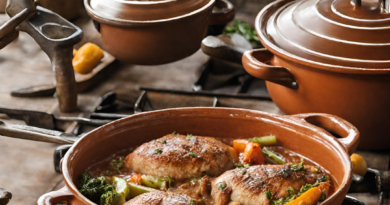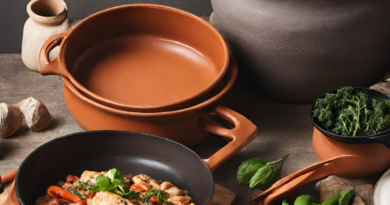How does clay cookware retain moisture in dishes?
Clay cookware’s ability to retain moisture in dishes is a culinary marvel that has been celebrated for centuries. The secret lies in the unique properties of clay, which create a natural and effective moisture-retaining environment during cooking. In this article, we’ll delve into the science behind how clay cookware accomplishes this and why it’s prized for creating tender, flavorful dishes.
1. Porosity of Clay:
Clay is inherently porous, meaning it contains tiny interconnected spaces or pores within its structure. These pores are the key to clay cookware’s moisture-retaining abilities. When the pot is soaked in water before use, these pores become saturated.
2. Gradual Moisture Release:
As the clay pot is heated during cooking, the water trapped within its pores slowly turns into steam. This steam is released into the cooking environment at a controlled rate. Unlike some other cooking materials, clay does not allow moisture to escape rapidly into the atmosphere.
3. Self-Basting Effect:
The slow and controlled release of steam creates a self-basting effect within the clay pot. The rising steam continuously bathes the ingredients in the pot, effectively basting them in their own juices. This constant infusion of moisture prevents the dish from drying out and keeps it exceptionally moist and tender.
4. Even Heat Distribution:
Another advantage of clay cookware is its ability to distribute heat evenly. The porous nature of clay helps distribute heat uniformly across the cooking surface. Even heat ensures that every part of the dish receives the same moisture-rich environment, preventing uneven cooking and dry spots.
5. Flavor Concentration:
In addition to moisture retention, clay cookware also contributes to the concentration of flavors. The slow and steady evaporation of moisture through the porous clay allows the flavors of the ingredients to become more concentrated over time. This is especially beneficial for dishes that rely on the melding of spices, herbs, and aromatics.
6. Gentle Cooking:
Clay pots are known for their gentle and consistent cooking. The steady, low to medium heat they provide ensures that ingredients are cooked slowly and evenly. This gentle cooking process allows proteins to break down gradually, resulting in exceptionally tender and flavorful dishes.
7. Reduced Evaporation:
Unlike some cooking materials, such as metal, clay pots do not promote rapid evaporation of liquids. The tight-fitting lid and the porous nature of clay keep the moisture within the pot, preventing the loss of liquids and flavors.
8. Moisture Circulation:
The porous walls of clay pots enable moisture circulation within the cooking vessel. This means that the moisture released by the ingredients and any added liquids is continuously circulated throughout the dish. As a result, every component of the dish benefits from the moisture, contributing to a harmonious and well-cooked meal.
In conclusion, clay cookware’s ability to retain moisture in dishes is a result of its porous structure and the controlled release of steam during cooking. This natural moisture-retaining mechanism creates a self-basting, flavor-enhancing environment that is ideal for slow-cooking and creating tender, succulent, and flavorful dishes. Whether you’re preparing stews, braises, or other dishes that benefit from moist and even cooking, clay cookware is a valuable tool for elevating your culinary creations.



